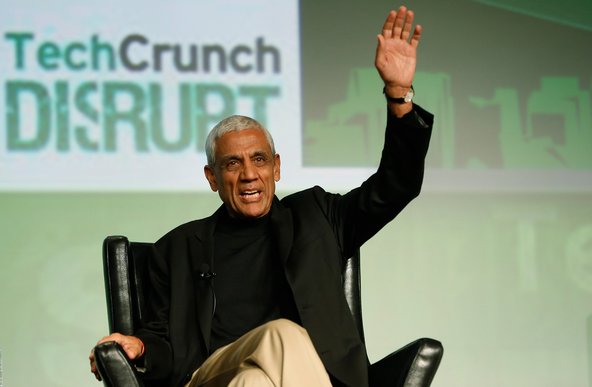So when he heard about an unusual campaign that aims to unionize dozens of fast-food restaurants in New York in the hope of raising wages to $15 an hour, Mr. Hall, 23, was quick to sign on.
“It’s time for a change,” he said, “It’s time to put on the gloves.”
Mr. Hall has enlisted in what workplace experts say is the biggest effort to unionize fast-food workers ever undertaken in the United States, a campaign that will be announced publicly on Thursday. The effort — backed by community and civil rights groups, religious leaders and a labor union — has engaged 40 full-time organizers in recent months to enlist workers at McDonald’s, Wendy’s, Domino’s, Taco Bell and other fast-food restaurants across the city.
Over the decades there have been occasional efforts to unionize a fast-food restaurant here or there, but labor experts say there has never before been an effort to unionize dozens of such restaurants. The new campaign aims in part to raise low-end wages and reduce income inequality, and is also an uphill battle to win union recognition.
Ruth Milkman, a sociology professor at the City University of New York, said there had been so few efforts to unionize fast-food workers because it was such a daunting challenge.
“These jobs have extremely high turnover, so by the time you get around to organizing folks, they’re not on the job anymore,” she said. Nonetheless, she said the new effort might gain traction because it is taking place in New York, a city with deep union roots where many workers are sympathetic to unions.
Jonathan Westin, organizing director at New York Communities for Change, a community group that is playing a central role in the effort, said hundreds of workers had already voiced support for the campaign, called Fast Food Forward.
“The fast-food industry employs tens of thousands of workers in New York and pays them poverty wages,” Mr. Westin said. “A lot of them can’t afford to get by. A lot have to rely on public assistance, and taxpayers are often footing the bill because these companies are not paying a living wage.”
Mr. Westin said the campaign was using techniques that differed from those in most unionization drives, and was still developing overall strategy. He declined to say whether it would pursue unionization through elections or by getting workers to sign a majority of cards backing a union.
McDonald’s issued a statement about the incipient unionization push. “McDonald’s values our employees and has consistently remained committed to them, so in turn they can provide quality service to our customers,” the company said.
It added that the company had an “an open dialogue with our employees” and always encouraged them to express any concerns “so we can continue to be an even better employer.” McDonald’s noted that most of its restaurants were owned and operated by franchisees “who offer pay and benefits competitive within the” industry.
Even with a union, it might be hard to obtain wages of $15 an hour, and many employers say they would most likely employ fewer workers if they had to pay that much.
Mr. Westin’s group, New York Communities for Change, has played a major role in the recent uptick in unionizing low-wage workers in New York, many of whom are immigrants. In the past three months, his group has helped win unionization votes at four carwashes and six supermarkets in New York.
The sponsors of the fast-food campaign also include
UnitedNY.org, the Black Institute and the Service Employees International Union, a powerful union that is playing a quiet but important role behind the scenes.
Several religious leaders are backing the effort. “I’ve become involved because it is primarily a matter of justice,” said the Rev. Michael Walrond of the First Corinthian Baptist Church in Harlem. “We seek to protect those who are the most vulnerable in our culture, and some of the most vulnerable people in the city are fast-food workers who work for poverty wages.”
According to the State Labor Department, median pay for fast-food workers in the city is around $9 an hour — or about $18,500 a year for a full-time worker.
Linda Archer, a cashier at the McDonald’s on 42nd Street just west of Times Square, said she wished she earned that much. She earns $8 an hour after three years there and averages 24 hours a week, she said, meaning her pay totals about $10,000 a year.
“I feel I deserve $15 an hour,” said Ms. Archer, 59. “I work very hard.” She said she hoped a union would deliver affordable health insurance and paid sick days.
“My hope is we can all come together in a union without being intimidated,” she said.
TCB Management, the franchisee that operates Mr. Hall’s McDonald’s, and Lewis Foods, which runs Ms. Archer’s, did not respond to inquiries.
Tim McIntyre, a Domino’s Pizza spokesman, said the few efforts to unionize its stores and drivers had fallen flat.
“It’s a fairly high-turnover position, so there’s never been a successful union effort,” he said. “People who are doing this part time, seasonally or as they work their way through college don’t find much interest in membership.”
Richard W. Hurd, a labor relations professor at Cornell, said the organizations backing the fast-food campaign seemed intent on finding pressure points to push the restaurants to improve wages and benefits.
“But it’s going to be a lot harder for them to win union recognition,” he said. “It will be harder to unionize them than carwash workers because the parent companies will fight hard against it, because they worry if you unionize fast-food outlets in New York, that’s going to have a lot of ramifications elsewhere.”
Article source: http://www.nytimes.com/2012/11/29/nyregion/drive-to-unionize-fast-food-workers-opens-in-ny.html?partner=rss&emc=rss
